EXCLUSIVE: US fighter pilots expose what it’s really like to train for a mission at the real-life Top Gun school on the Dennis Quaid-hosted Fox Nation show
Dropping seals to confront a hostile crowd at an embassy and battling Russian helicopters are just some of the tasks the country’s top military pilots face as they train in the real-life version of ‘Top Gun’.
The pilots of the elite Marines’ Weapons and Tactics Instructor course are the best The US military has to offer. But that comes at a price of $200,000 per student for the seven-week course – the same as an Ivy League education.
By completing Top Gun ESC School, the fighters can return as the best fighter pilots in the military and help train their units against the enemy.
“This is what we really prepare for, we hit this hard and heavy stuff, this is where the rubber meets the road,” Airman Major Jon Martinez said of the training program.
Now the course and the fear pilots face during training will be featured on a new Fox Nation show “Top Combat Pilot,” hosted by actor Dennis Quaid and airing Nov. 6.
“I’m very nervous coming in here, this has a reputation of not being an easy place to go through,” Captain Thomas Lauderdale said in an episode.
Dennis Quaid follows 25 pilots as they strive to complete the Weapons and Tactics Instructor course in his new series “Top Combat Pilot,” airing on Fox Nation on November 6
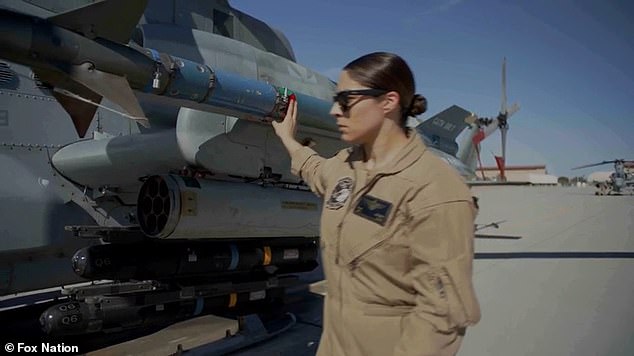
In the real-life ‘Top Gun’ school, pilots form every squadron in the country to train in a premier air fleet, including F-18 Hornets and Huey and Cobra attack helicopters
The program, the Weapons and Tactics Instructor (WTI) course, is hosted by Marine Aviation Weapons and Tactics Squadron One in Yuma, Arizona.
“You spend time with the students at WTI all the time and you quickly realize that most never talk about competition directly,” Quaid said.
‘Marines form a unit and operate as one. Every student pilot strives to be recognized by their WTI instructors as the very best on the flight line.”
The program brings together 25 of the top fighter pilots from every squadron in the country to train in a premier air fleet, including F-18 Hornets and Huey and Cobra attack helicopters.
“I want to be the best, I think anyone who is in this profession has to be Type A, I just love to win,” said Captain Mackenzie Spaich.
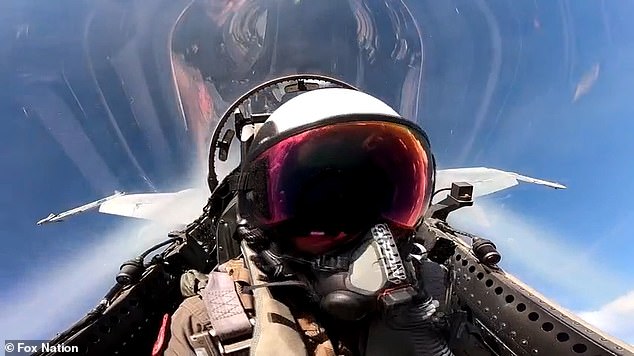
Exercises in the program include battling Russian helicopters and trying to place Navy Seals in an embassy while dealing with an angry mob
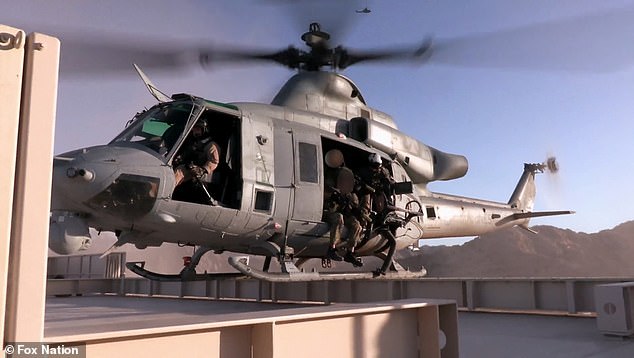
The program brings together 25 of the top fighter pilots from every squadron in the country to train in a premier air fleet, including F-18 Hornets and Huey and Cobra attack helicopters.
Pilots complete several intensive training operations, including exercises in combat against Russian helicopters and attempts to place Navy Seals in an embassy while dealing with an angry mob.
“There are natural nerves and natural hesitations. As a relatively younger man, you have some doubts about whether you belong or whether you are adequately prepared for the course because you expect to be tested,” said Captain Gavin Jernigan.
During a training exercise featured on the show, pilots practiced hitting two enemy battleships in the water. But in the air, Jernigan decided to bomb just one ship, “ignoring” the other ship, instructors on the show admitted.
This led to the failure of the mission and a debriefing in which they were made aware of the possible consequences of their decision and the time the mission took in total.
“I think the pace was a bit long, I wasn’t happy with that, minutes are huge, just like minutes are potentially a plane, two planes, five planes lost,” said instructor Harambe. I expected the execution to go a lot smoother.
The instructor added that Jernigan made decisions that affected the team’s mission.
“Nothing will ever be perfect, but it has to be as perfect as possible,” the instructor said.
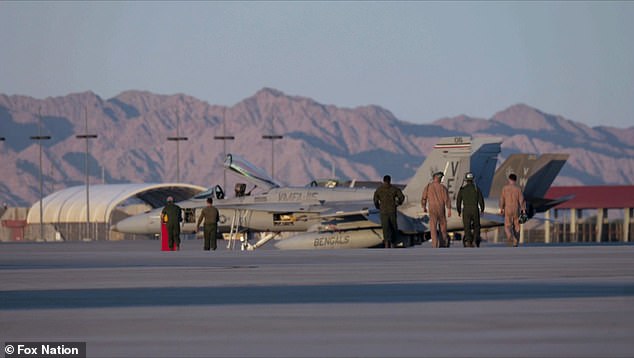
Officials say it costs $200,000 to train one person during the seven-week program
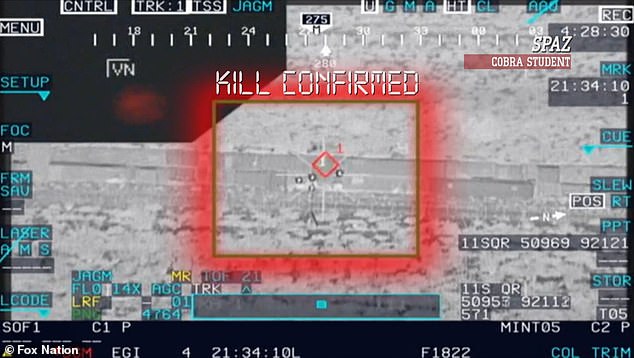
“Pilots are a breed all their own, they are laser focused and determined to perform without excuses,” Quaid said.
The group of pilots going through the program train as a unit, but each individual tries to prove themselves as the best.
“Pilots are a breed all their own, they are laser focused and determined to perform without excuses,” Quaid said.
In another mission on the show, the pilots were tasked with enforcing a no-fly zone where opponents violate the order.
Lauderdale played a key role in leading the patrol into the no-fly zone, but his mission plan unraveled when adversaries fired.
“I froze on the radio, there’s so much communication going on, I’ve got my wingman and I can’t even tell him what to do,” the pilot said.
Part of the team was struck down in a simulated assassination, leaving the pilot frustrated and disappointed with his failed leadership.
“This happens, you put guys in a high-stress scenario, they’re used to always winning because they’re very good at what they do, but when they’re faced with some problems that they can’t solve or put their athleticism into the plane can get them out of trouble because the planning was poor, they start to get frustrated with themselves,” Martinez said.
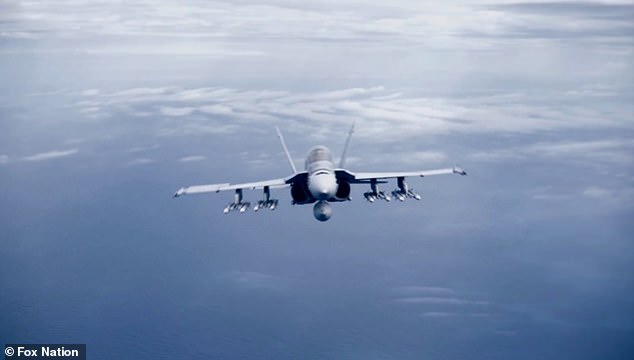
“This is the top 1 percent of the top 1 percent,” one pilot said.
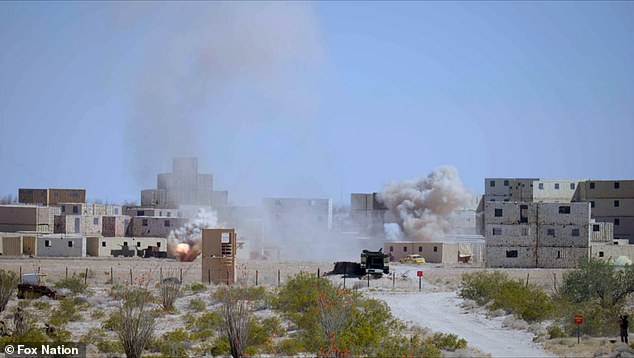
The training program leads to the final operation known as FINEX, the last chance for student pilots to prove themselves as the best before graduating.
The training program leads to a final operation known as FINEX, the last chance for student pilots to prove themselves as the best before graduating.
In 2017, Navy officials described FINEX as “designed to conduct a simulated Special Operations Forces attack while supporting regimental combat team objectives and focusing on executing all six functions of Naval Aviation.”
Completing that mission is essential to reaching graduation day. Some pilots came to the graduation ceremony relieved, others were ready to share what they had learned. Capt. William Odel said he had his own standard he wanted to meet — not just graduate.
“This is the top 1 percent of the top 1 percent,” he said.
Captain John Baum joked that he was looking forward to not having to wake up at 6 a.m. for practice, but said he would sleep in.
He admitted that there were difficult moments during training, but that he learned a lot and was willing to share it with his team.
“I’m looking forward to taking that back and hopefully forcing that on other people,” Baum said.
